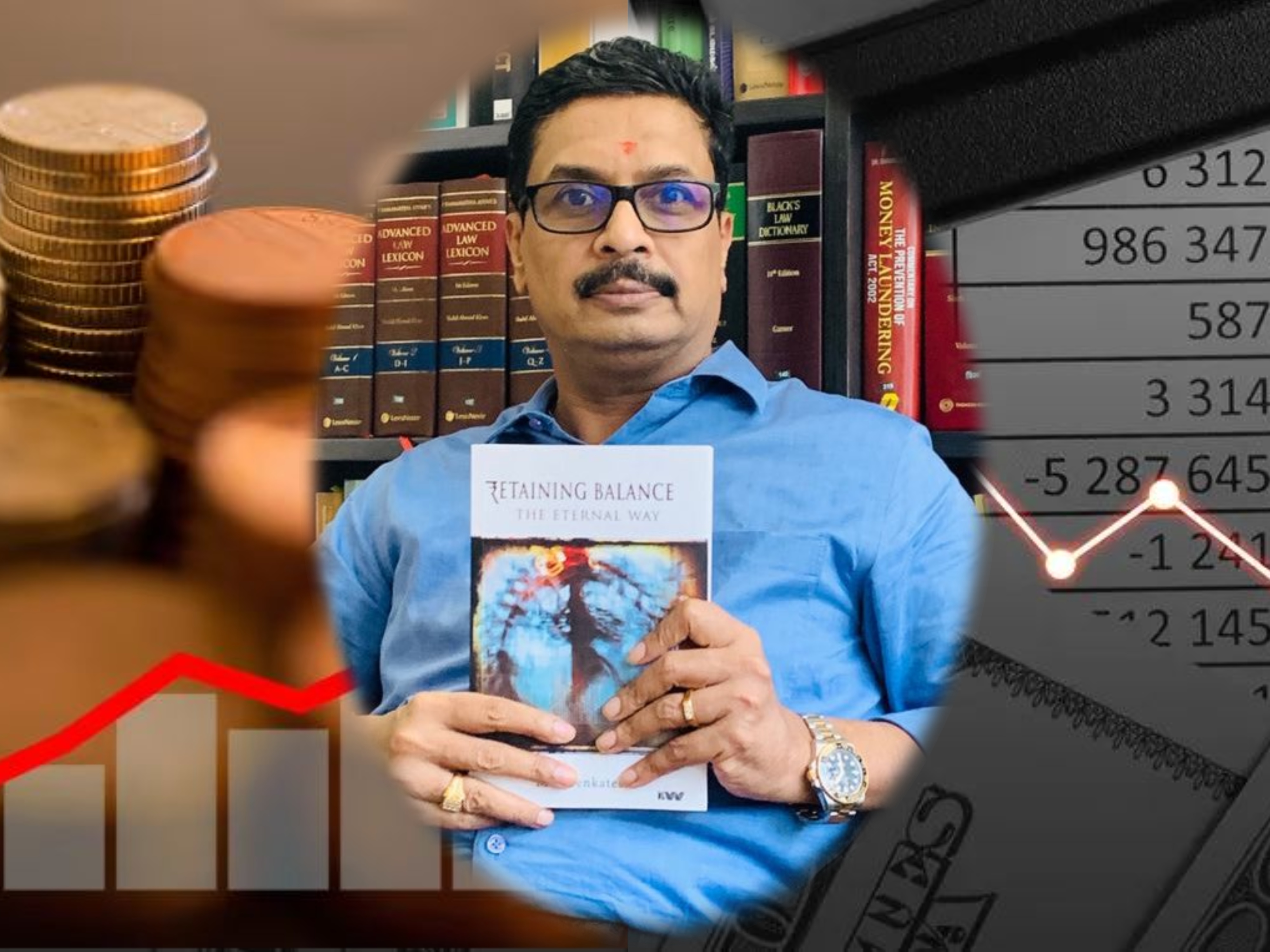- Visitor:21
- Published on:
Lower Interest Rate and Investment in Gold
Lower interest rates in an emerging economy like India, lowers consumption, and does not increase it as they theoretically imagine. Worse, Indians shift their savings from banks to avenues that offer better and probably safer returns. In the Indian context, that happens to be gold.

If market economies have spawned serious discontents at the global level, destabilized its classical twin ‘democracy,’ and devalued libertarian ideals, it has fared inadequately when it came to national economies too. At the root of the present consternation in the era of individualism is the excessive obsession about individual autonomy, that has reduced every single individual into a rootless wonder although it must be conceded that globalization brings about a sense of being part of a longer world, quite while simultaneously providing wider and greater access to goods and services. However, it brings along certain downsides on society, community, and particularly the family.
Forced opening of domestic markets, especially in less developed countries, often on the advice or suggestion of multilateral agencies and through economists of great repute, has devastated local industries as multi-national corporations have replaced indigenous businesses. Even as goods flooded the markets and economists saw the virtue in de-regulations and greater integration of markets across nations, people lost their jobs and saw their personal economic fortunes slip dramatically during globalization. These changes are adversely affecting individuals and families, even as there is a widening gap between the rich and the poor.
As poverty engulfs societies, individuals are forced to distance away from their traditions and culture in search of jobs. Individuals migrate, often in the process abandoning their culture and traditions, in search of greener pastures. Naturally, tradition and culture are often the first casualty of biting poverty. Therefore, uprooted from their traditional homes, many suffer from an identity crisis. Economies, that were vibrant till recently, have been destroyed by people who have seized the opportunity to finish the business that was being carried on for long. In the alternative, the manner in which the business was carried out was significantly altered. The twin attack on individual identity and on his traditional business has been far too brutal. In the absence of any meaningful study, it is presumed that all is indeed well and damage if any are at best collateral.
If large multinational corporates entering local markets, competing with local players,and destroying jobs is one aspect of the problem, robbing people of their hard-earned savings systematically by mis-pricing domestic interest rates is another aspect of the entire problem. Lower interest rates, classical economists explain, boost current consumption, while also shifting savings from bank deposits into stock markets. On both counts, the biggest beneficiaries of such policies are large multinational corporates.
Artificially lowering the interest rate is nothing but mis-pricing of capital. This allows flab by way of excess capacity to accumulate within the economy. Factories are set up anticipating higher future demand at lower interest rates. But even a partial upward adjustment of interest rates as witnessed in the past few years has dynamited this assiduously built plan.

Alan Greenspan goes on to explain how he, as chairman of the US Federal Reserve,cut interest rates in dealing with various economic crisis and instantly triggered growth.In a way, he could afford to do so as Americans do not have much savings (barring the mandatory ones). And such savings were predominantly linked to the stock market.That explains why rate cuts suited most Americans, and how the US economy responded positively to such rate cuts in the first place. Crucially, as explained in the earlier part of this chapter, Americans depend on the savings of the rest of the world even for their domestic needs. In effect, a depression of interest rates, albeit artificially benefits the US, as it is the single larger borrower at a global level, and of course, at a concomitant cost to the rest of the world. Put differently, the poor of the developing world not only fund the richest country of the world (the US) but also subsidize such funding. Paradoxical, isn’t it? And it is this internal contradiction in national economies that is increasingly widening the fault lines at a global level.
The events unfolding in decade between 2005 and 2015 in a developing country like India is a classic case in point. In a country where there are millions of depositors who deposit billions of rupees each year into the bank as deposits, the standard practice in the past decade or so has been to shift the debate in favor of lower interest rates for the borrower. In the process, little do we realize we are hurting small savers to favor the popular narrative of economists from the West, stock market sentiments, and multi-national corporates. In India, in the absence of a social security mechanism (and good governance), bank savings have emerged as a viable – and will continue in the foreseeable future – an effective social security mechanism. Savings, in the Indian context, are an insurance against a rainy day – old- age pension, health care, education for children, and a host of other things, all rolled into one.
Needless to emphasize, savings in banks are held by most as being liquid and reliable.This one crucial differential – that interest in India also doubles as a social security that most analyst miss when it comes to dealing with rate cuts in India. Consequently, lower interest rates rob ordinary Indians of his returns, makes him unsure, and consequentially nervous about his future.
That makes the prudent Indian possibly become irrational all under the idea of the most rational of economic policies – market economies. And when large number of men become irrational, it becomes extremely dangerous for any nation and its economy. Naturally, when inflation overtakes interest rates as it often does in India, the average Indian responds by improving his aggregate savings. This has unintended consequences that most economies are unable to comprehend. Lower interest rates in an emerging economy like India, lowers consumption, and does not increase it as they theoretically imagine.
Worse, Indians shift their savings from banks to avenues that offer better and probably safer returns. In the Indian context, that happens to be gold. This, in turn, leads to imports of gold and surge in currency account deficit. Whenever savings get parked in unproductive assets, as it happens repeatedly in the case of gold, it dynamites the macro-economic balance in India. What is a perfect investment avenue for the individual probably ends up as a cumulative disaster at the national level. Crucially, the Indian rupee takes a hit, as continuous current account deficit leads to depreciation of the rupees. This, by itself, leads to the inflation of gold purchased, and becomes what is technically called a self-fulfilling prophecy. Importantly, a weaker rupee leads to higher fuel costs (approximately 80 percent of the Indian crude requirement is imported).Higher fuel cost in turn leads to higher inflation. This again had a debilitating impact on the economies.
Interestingly, most believe that lower interest rates will instantly revive growth in all economies. But the fact remains, mis-pricing interest rates by artificially lowering interest rates in the context of developed countries has a debilitating impact on the national economy. Indian experience demonstrates that lower interest rates are no guarantee for sustained economic growth, and probably could lead to asset bubbles. On the other hand, lower interest rates are generally perceived to favor the corporates at the cost of the individual.The idea of a soft interest rate regime lends itself to some perception that all that matters in the balance sheet of the corporates, rather than the balance sheet of the nation. Naturally, artificial lowering of interest rates is seen as an assault on families to benefit corporates and business houses. This transfer of wealth from the hands of the families to the corporates under a toxic economic regime is at the center of the modern economic conundrum. In the process, economic policies seem to have divorced families, their desires, anxiety, and fear. That explains partly, if not wholly, why there is an opposition to market economies from those who feel that their culture is under some sort of threat.
Source:
Original article: “Market misfire at the national level too” , Retaining Balance (The Eternal Way), by MR Venkatesh, Page No. 132-135
Center for Indic Studies is now on Telegram. For regular updates on Indic Varta, Indic Talks and Indic Courses at CIS, please subscribe to our telegram channel !
- 10 min read
- 0
- 0










